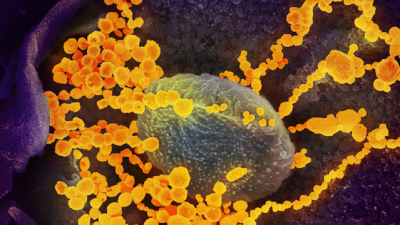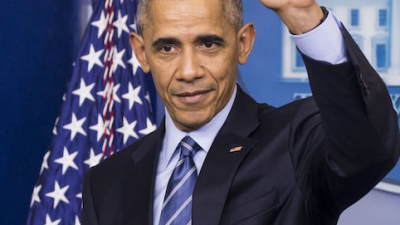Here are links to Part I, Part II and Part III of this series. An earlier background piece is here.
Trump’s Lies and Deceptions: Fudging the Numbers
Trump Pandemic Timeline Part IV
The lack of early widespread testing for COVID-19 not only crippled America’s response to the virus, but also contributed to a vast undercounting of the resulting infections and deaths. That’s fine with Trump.
Understating the actual US numbers helps Trump in two ways: It masks the magnitude of his failures, and it aids his current effort to convince Americans that he can “reopen the economy” without a comprehensive testing program that would reveal the virus’ continuing danger to public health.
Fewer Tests Given = Fewer Cases Confirmed = Fewer Deaths Counted
Jan. 20, 2020: On the same day, the US and South Korea confirm their first cases of COVID-19. Immediately, South Korea ramps up an aggressive testing and contact-tracing program.
For the next six weeks, the US does virtually no testing as Trump ignores repeated warnings from his advisers and tells the public that the virus is under control.
Mar. 6: The Grand Princess cruise ship remains in limbo off the San Francisco coast. Trump says he doesn’t want infected passengers taken off the ship because it will raise the total case count in the US:
“I like the numbers being where they are. I don’t need to have the numbers double because of one ship that wasn’t our fault.”
Total US tests to date: 1,982 [Note: Data was updated after original submission]
Total South Korea tests to date: 164,740
Mar. 24: As expected, the number of confirmed cases in the US increases as testing increases:
Total US tests to date: 353,809 [Updated data]
Total US confirmed cases: 57, 224 (16% positive)
Data show that South Korea’s widespread early testing and contact-tracing efforts are working:
Total S. Korea tests to date: 348, 582 (more than six times the US per capita rate)
Total S. Korea confirmed cases: 9,037 (3% positive)
Apr. 3: As the number of US deaths surpasses 7,000, the CDC issues new guidance that a laboratory test should be used to confirm COVID-19 as the cause of death. If the deceased wasn’t tested prior to death, “it is acceptable to report COVID–19 on a death certificate without this confirmation if the circumstances are compelling within a reasonable degree of certainty.” Despite this high standard, the death toll continues to rise.
Apr. 5: Even as the total number of reported US deaths from COVID-19 more than doubles in one week to exceed 9,500, a CDC spokesperson admits, “We know that it is an underestimation.”
The undercounting of US COVID-19 deaths results directly from early and ongoing testing and case-tracing failures:
- Prior to late March, many deaths were reported incorrectly as influenza, pneumonia, or respiratory illness because tests weren’t available.
- Although the CDC recommends the use of a positive COVID-19 test to confirm cause of death, the tests have been in short supply so they’re not wasted on the deceased.
- From its first COVID-19 death on Mar. 14 and continuing through Apr. 13, New York City’s official total included only victims who had a tested positively while they were still alive.
On Apr. 14, NYC added 3,778 victims to its death toll who were presumed to have died from the virus but had never been tested — raising the city’s total COVID-19 deaths from 6,589 to 10,367.
- In NYC alone, the outbreak may have contributed to another 3,000 “excess deaths” (compared to the same period in prior years), including individuals who died because COVID-19 cases overwhelmed the city’s health care system and crowded out treatment for other serious conditions.
- Many untested individuals are dying in long-term senior care facilities and some states don’t track those deaths at all.
- Hospital data drive the official COVID-19 death counts. But at-home deaths have also spiked dramatically in many places. Experts believe that the virus is a contributor, as many people who later died of the disease were “presumed positive” patients sent home to shelter in place.
- Researchers estimate that the COVID-19 test has a false negative rate of 15 to 30 percent. Those infected patients (and their doctors) mistakenly believe they don’t have the virus. When such individuals later die from the disease, often they don’t count as COVID-19 deaths.
Apr. 7: Asked about recent media reports on the undercounting of COVID-19 deaths, Trump says, “[T[he death counts, I think they’re very, very accurate,” adding, “I do say this: I think if you look at China and if you look at some of these very large countries, when you talk about cases — number of cases — I would be willing to bet they have more cases than we do, but they don’t do the testing like we do.”
Apr. 9: Asked whether the US needs an expanded nationwide COVID-19 testing program before the economy can restart, Trump says, “We want to have it and we’re going to see if we have it. Do you need it? No. Is it a nice thing to do? Yes.”
Apr. 10: On a per capita basis, US testing still lags far behind other countries, including South Korea and Italy. But at a press briefing, Trump says, “We’re leading the world now in testing, by far, and we’re going to keep it that way.”
A reporter asks Trump how Americans will know that the virus has been defeated without a comprehensive nationwide testing and contact-tracing program. “We’ll know because people aren’t going to go to the hospital, people aren’t going to get sick,” he says. “[Y]ou’re going to see nobody’s getting sick anymore. It will be gone, and it won’t be that much longer.”
Apr. 15: Asked why the US has 20 percent of the world’s COVID-19 deaths but only four percent of the world’s population, Trump suggests that other countries aren’t reporting all deaths, saying, “We report everything. We’re reporting the cases, and our reporting is good. We’re reporting every death… We have more cases because we do more reporting.”
Public Health: Numbers Matter Only When They Drive Policy
Trump’s former FDA Commissioner Scott Gottlieb and a team of experts have estimated that the US must perform a minimum of 750,000 tests per day and create the medical infrastructure necessary to provide same-day results. Only then can the country trace infected individuals and move safely away from community-wide interventions (i.e. stay-at-home orders) to a case-based approach. Currently, the US averages fewer than 150,000 tests per day and obtaining results can take a week or more.
The US also requires 100,000 contact tracers to follow up on confirmed cases. In early April, Massachusetts became the first state to launch such a program, which will employ 1,000 tracers. San Francisco announced its pilot program on Apr. 15.
Trump: “We have to get our country open.”
Question: “Will you say, sir, what metrics you will use to make that decision?”
Trump: “The metric’s right here.” [Points to head] “The metric’s right here. That’s my metric.”
Trump: “We have to get our country open.”
Question: “Will you say, sir, what metrics you will use to make that decision?”
Trump: “The metric’s right here.” [Points to head] pic.twitter.com/LzN8S6bnVG
— The Hill (@thehill) April 11, 2020
Trump is lying about his testing failure. He’s lying about the tragic consequences of that failure as measured in infections and deaths. And he’s lying that he can “reopen the economy” safely without an adequate testing and contact-tracing regime in place.
Americans will keep paying for his lies with their lives.
Here are links to: Part I, Part II, and Part III of this series on Trump’s Lies and Deceptions. An earlier background piece is here.
© 2020 Schumann Media Center, Inc.





